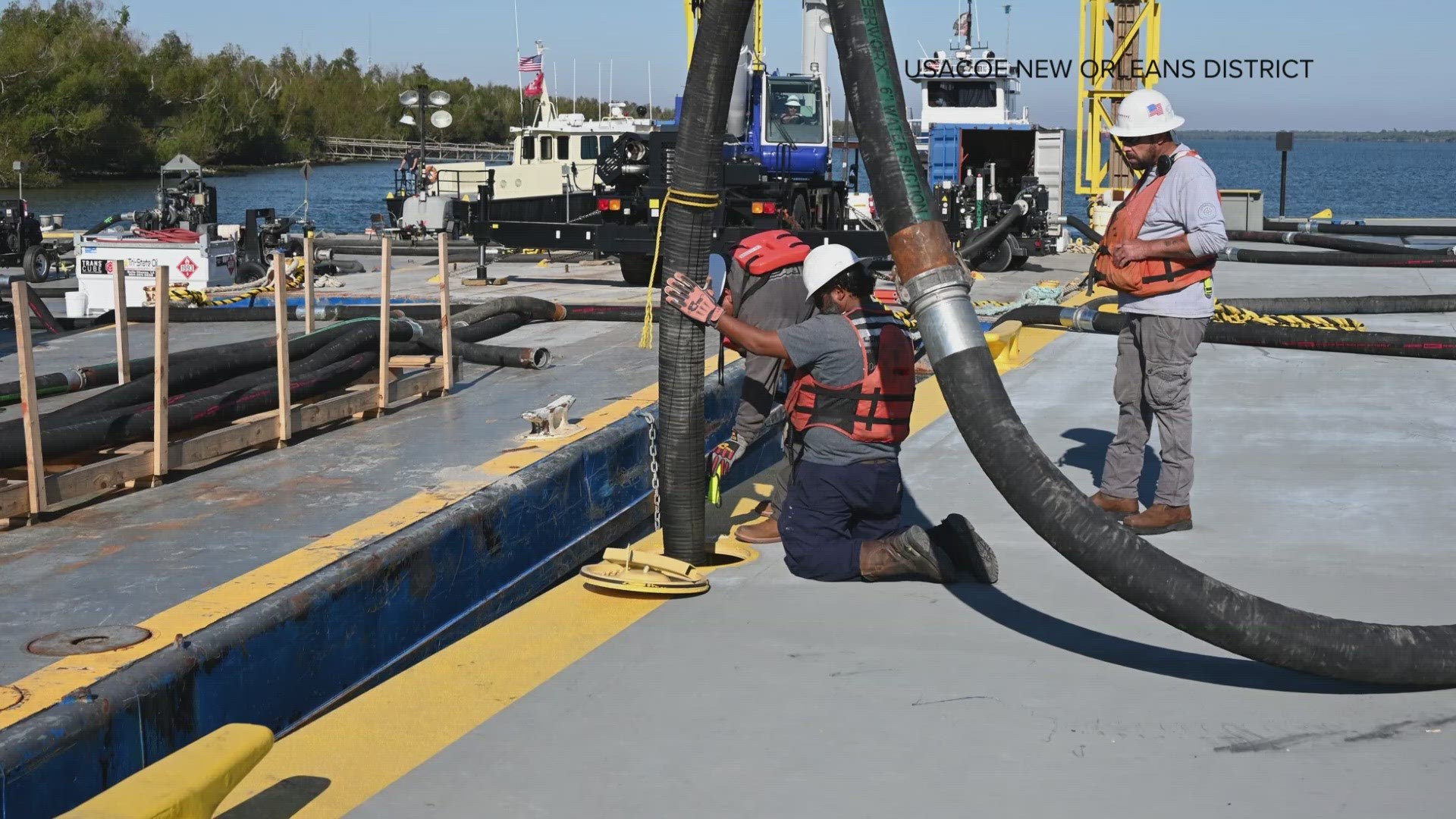NEW ORLEANS — St. Bernard Parish is no longer expected to be impacted by the saltwater wedge which had been making its way up the Mississippi River since the summer.
The latest projections by the U.S. Army Corps of Engineers says that increased flows on the Mississippi and the augmentation of the underwater sill have played a part in slowing the wedge.
Last week the Corps removed Algiers and Gretna from the list of areas anticipated to be impacted by the wedge.
In addition to the news on St. Bernard, Belle Chasse and Dalcour had their expected impact dates pushed back with continued hopes that increased flows could keep their from being any impact.
The latest forecasts include:
Boothville: Current impacted
Port Sulphur: Currently impacted
Pointe A La Hache: Currently impacted
Belle Chasse: Nov. 13 (previously Oct. 27)
Dalcour: Nov. 18 (previously Nov. 1)
St. Bernard: Not anticipated to experience chloride levels exceeding 250 ppm
New Orleans Algiers: Not anticipated to experience chloride levels exceeding 250 ppm
Gretna: Not anticipated to experience chloride levels exceeding 250 ppm
West Jefferson: Not anticipated to experience chloride levels exceeding 250 ppm
New Orleans Carrollton: Not anticipated to experience chloride levels exceeding 250 ppm
East Jefferson: Not anticipated to experience chloride levels exceeding 250 ppm
The Corps began barging water to the Port Sulphur and Pointe A La Hache treatment facilities to blend with water from the intakes to bring the chloride down to treatable levels. To date, USACE has delivered more than 23 million gallons of water. USACE has also mobilized Reverse Osmosis Units to support processing at water treatment facilities impacted by saltwater intrusion.

